The UV meter had two measurement modes. One is manual mode which needs to start up or end of measurement manually. Another is an automatic mode that can automatically switch on or end of measurement when the energy intensity emitted by the light source is above or below the trigger threshold that can be set. With a wide spectral response range, the UV tester can test UV LED light sources with any peak in the range of 365nm-405nm.
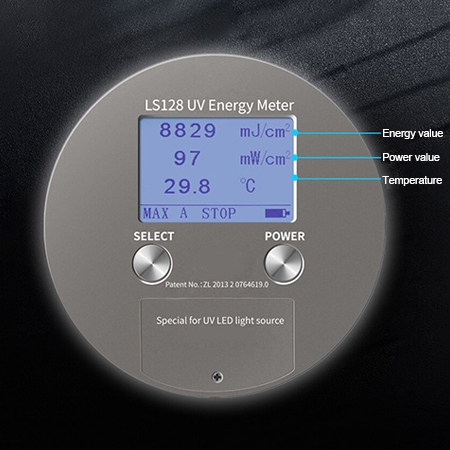
Simultaneous measurement of energy and power
- The UV energy meter is equipped to measure both the total UV energy and the real-time power output (in mW/cm²), providing a comprehensive understanding of the UV exposure in one device.
- With the ability to track both energy and power, it’s ideal for processes that require precise control over both the cumulative UV dose and the intensity at any given moment, such as UV curing and photolithography.
- The dual measurement capability ensures that both long-term exposure and immediate power levels are accurately monitored, helping to optimize and maintain consistent process quality.
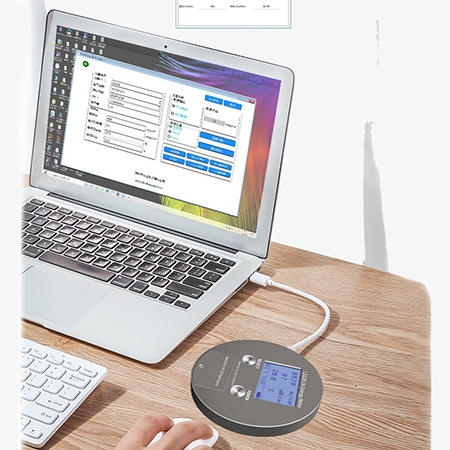
Test data can be exported through the computer software to print the test report
- The UV energy meter allows users to easily export test data to a computer through dedicated software, making it simple to analyze and store measurement results.
- With the software, users can generate detailed test reports, including both energy and power readings, which can be printed or shared for record-keeping and quality control.
- The ability to export and organize data digitally enhances traceability and simplifies the process of reviewing and comparing multiple tests over time.
Application
SISCO UV meter is commonly used across various industries to measure ultraviolet (UV) light intensity. Key applications include monitoring and controlling UV curing processes in manufacturing, ensuring proper UV sterilization in water treatment and healthcare, and assessing UV exposure levels in environmental testing and research. These meters are crucial for maintaining product quality, safety, and compliance with industry standards in sectors such as printing, electronics, pharmaceuticals, and environmental science.
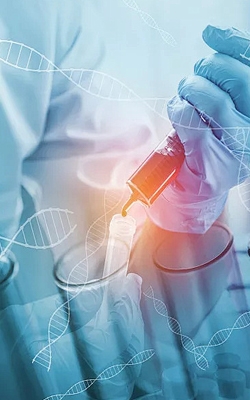
Health and Safety

Reptile Care
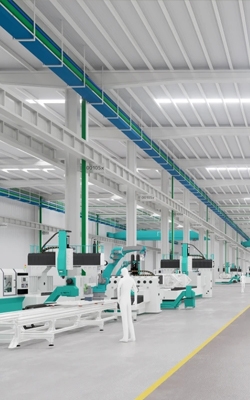
Industrial
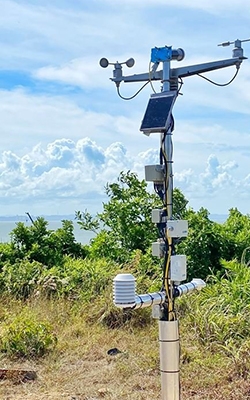
Environmental Monitoring
| Model | SISCO-UVM-128 |
| Spectral Response | 340-420nm (Instrument calibration and 395nm light source) |
| Range | 0-40000 mW/cm2 |
| Resolution | 1 mW/cm2 |
| Energy Measurement Range | 0-999999 mJ/cm2 |
| Measurement Accuracy | ±10% |
| Sampling Speed | 2048 times/s |
| Power Data Storage Interval | 32 times/s |
| Recording Period | 32min |
| Probe Cable Length | -55-125℃ |
| Temperature Data Storage Interval | 2 times/s |
| Weight | 300g |
Details and Dimension
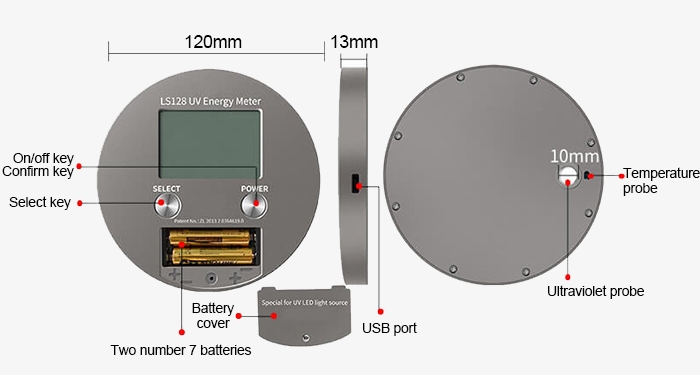
Q1: What is a UV Meter?
A1: A UV meter is an instrument used to measure the intensity of ultraviolet (UV) light, It is commonly used in industries such as manufacturing, healthcare, and environmental monitoring to ensure proper UV exposure for applications like curing, sterilization, and UV radiation assessment.
Q2: What types of UV radiation can a UV Meter measure?
A2: A UV meter is capable of measuring various types of UV radiation, including UVA (320-400 nm), which is commonly used in tanning and curing processes; UVB (280-320 nm), which plays a key role in environmental monitoring and healthcare, particularly in skin-related studies; and UVC (100-280 nm), which is highly effective in sterilization and disinfection. Each type of UV radiation has specific applications, and a UV meter can be designed to measure one or multiple types depending on its sensors and filters.
Q3: Can a UV Meter measure UV radiation from sunlight?
A3: Yes, a UV meter can measure UV radiation from sunlight. It’s commonly used in environmental monitoring to assess the levels of UVA and UVB radiation, which are the types of UV light that reach the Earth's surface. This information is crucial for understanding UV exposure risks, studying environmental impacts, and ensuring public safety.
Tips: What is a UV Energy Meter?
A UV energy meter is an instrument designed to measure the total energy output of ultraviolet (UV) light over a given time period. Unlike a UV light meter, which measures the intensity of UV light at a specific moment, a UV energy meter captures the cumulative exposure to UV radiation, typically expressed in millijoules per square centimeter (mJ/cm²). This makes it particularly useful in industries such as printing, UV curing, and manufacturing, where precise control of UV exposure is essential for ensuring the quality, consistency, and effectiveness of processes like curing inks, coatings, and adhesives. By providing a clear measure of the total UV energy received, these meters help maintain process standards and optimize outcomes in applications that rely on UV light.
Thank you for buying industrial test and measurement equipment on SISCO.com, all products sold by SISCO and the partner cover a 12 months warranty, effective from the date of receiving the products.
What is covered?
SISCO is responsible for providing free spare parts, and free technical support to assist the customer to repair the defective products until the problem is solved.
What is not covered?
- Product purchased from anyone other than a SISCO store or a SISCO authorized reseller.
- Expendable parts.
- Routine cleaning or normal cosmetic and mechanical wear.
- Damage from misuse, abuse or neglect.
- Damage from use of parts other than SISCO approved.
- Damage from use outside the product’s usage or storage parameters.
- Damage from use of parts not sold by SISCO.
- Damage from modification or incorporation into other products.
- Damage from repair or replacement of warranted parts by a service provider other than a SISCO authorized service provider.
- Damage caused by the application environment not meeting the product usage requirements and the failure to perform preventive maintenance.

